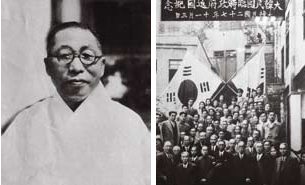Three tourist attractions that you must visit when SEOLLAL in South Korea
Seollal
(Chinese New Year; first day of the lunar calendar) is one of the most famous
national holidays in Korea. Although many celebrate Sinjeong (Solar New Year;
January 1 of the Gregorian / Western calendar), Koreans also celebrate Seollal,
which usually lasts three days (D day, the day before, and the next day).
More
than just a holiday to mark the start of the new year, Seollal is truly a
special occasion for Koreans. Today is not only a day to pay homage to
ancestors, but also an opportunity to chat with family members. During Seollal,
Koreans usually perform ancestral rituals, play traditional games, eat
traditional food, listen to stories and talk into the night. Read on to find
out how Koreans celebrate Seollal.
What
tours should you visit? Three of them are ...
1.
Namsangol
Hanok Village (남산골한옥마을)
Namsangol Hanok Village opened in 1998
on the northern side of Namsan Mountain in the center of the capital. This
village has five restored hanok (traditional Korean house) premises, a
pavilion, traditional garden, performance arts stage and a time capsule plaza,
making it a perfect spot for both locals and tourists to take a leisure walk.
Upon entering from the front gate, visitors will get a taste of Korea's
traditional life while escaping from the bustling city life. The traditional
garden with its pavilion and old houses creates a peaceful ambiance before the
forested Namsan Mountain. A time capsule commemorating Seoul’s 600th
anniversary was buried in 1994 at the highest point of the village and is
scheduled to be reopened 400 years later in 2394.
The five hanok premises at Namsangol
Hanok Village once belonged to aristocrats and government officials of the
Joseon dynasty. Each house was originally located in different neighborhoods,
but they were all moved to this area and restored to their original form. The
houses were rebuilt using their original materials, except for one house, where
the materials were too old and deteriorated to be reused. The premises were
carefully restored and replicated according to their original form to depict
the owners’ social class and personality. These buildings are now used as an
exhibit to portray the living environment during the Joseon dynasty as well as
a venue for educational and cultural programs for children and tourists.
Address : 28,
Toegye-ro 34-gil, Jung-gu, Seoul
서울특별시
중구 퇴계로34길 28 (필동2가)
2.
Seoul
Museum of History (서울역사박물관)
Seoul Museum of History opened on May
21, 2002 within the Gyeonghuigung Palace site. The three-story building covers
everything about Seoul's history and culture from the prehistoric era to modern
times, focusing especially on the Joseon era. The museum aims to raise cultural
awareness and build a strong bond within the community by collecting,
preserving, researching, and displaying artifacts and materials related to
Seoul as well as promoting the city's history and culture to an international
audience.
Address : 55,
Saemunan-ro, Jongno-gu, Seoul
서울특별시 종로구 새문안로 55 (신문로2가)
3.
Korean
Folk Village (한국민속촌)
Korean Folk Village introduces
traditional culture from the late Joseon period to both local and international
visitors through cultural classes experience, shaman faith, seasonal customs
and others. It recreated the past through the restoration of houses from the
Joseon dynasty.
Performances including nongak (farmer’s
music), martial arts on horseback, traditional wedding ceremony, and other
special events are available by season. In particular, "Welcome to
Joseon," an event held every May, takes visitors back to the past. In
addition, a family-friendly theme park equipped with 15 exciting attractions is
also available. Visitors can also try various Korean foods at the market
street.
Address : 90
Minsokchon-ro, Giheung-gu, Yongin-si, Gyeonggi-do
경기도 용인시 기흥구 민속촌로 90 (보라동)
Source : https://www.visitkorea.or.id/article/perayaan-seollal-di-korea-sekilas-tentang-budaya-lokal







Komentar
Posting Komentar